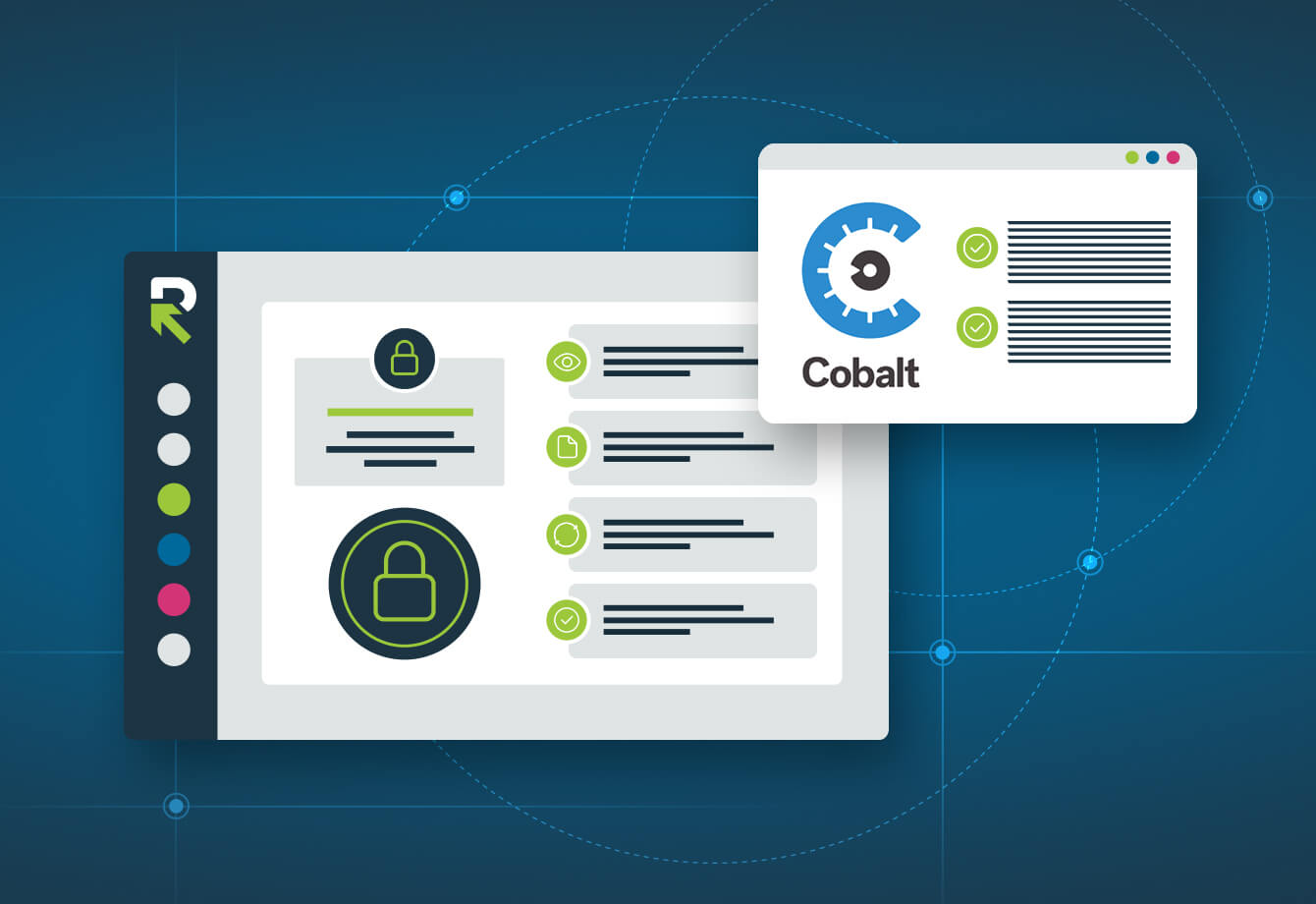Entering into a business relationship, whether it includes making a large purchase or even a merger or acquisition, is complicated. With today’s security challenges, it is riskier than ever.
When a company receives a DDQ, the document shouldn’t be taken lightly. Lack of due diligence on the part of the responder can risk future deals, future partnerships, and even the company’s reputation.
What is a DDQ?
DDQ stands for due diligence questionnaire. While that sounds somewhat vague, a DDQ is all about mitigating risk by determining whether the company receiving the DDQ complies with the issuer’s standards and regulations.
A DDQ could be a precursor to an RFP, a merger or acquisition, or an audit from an existing customer. It could even be a way of creating a list of “safe” companies for future dealings.
Naturally, DDQs are as varied as the companies, and especially the industries, that issue them. Tech companies, for example, emphasize security and privacy compliance. Financial institutions want assurance that vendors won’t put them in hot water with the Securities and Exchange Commission, among other regulatory agencies. And those in the healthcare industry need to verify HIPAA compliance.
Naturally, it’s not that simple. There’s a lot of overlap. Every industry, for example, is concerned with security and privacy. Nearly every DDQ, regardless of sector, probes companies about their history, investments, organizational structure, etc.
In short, the job of a DDQ response team is to paint a picture of a company that is stable and compliant.
A DDQ is not a sales document. Most DDQs will not ask about product functionality, market share, hiring practices, etc., although they might ask about major new product releases, as they could affect financial forecasts.
Who issues DDQs?
While any organization could issue a DDQ, they’re primarily issued by technology companies, financial services companies, and government agencies.
DDQs can have dozens, hundreds, and even thousands of questions, but even the simplest DDQs require input from multiple stakeholders. If you’re in charge of responding to DDQs, you may need input from the following roles:
- Financial – You could receive questions regarding your company’s financial health. These may include questions about anything from investors, to financial statements, to liens, to the amount of taxes your company pays, etc. If you work for a privately held company, you might not choose to answer those questions, but the issuer will ask.
- Legal – Most legal questions fall under the purview of RFPs. However, you may see DDQ questions related to legal compliance.
- Mergers and Acquisitions – Companies must issue DDQs before entering into mergers or acquisitions.
Analysts – While raw data might be enough to answer some questions, many will need a deeper understanding and even forecasting. - Compliance – Gauging compliance is the core function of a DDQ.
- IT – IT departments are at the front line of enacting and maintaining security protocols.
- Procurement – In many companies, procurement departments are DDQs’ project managers. It’s rare, however, to see questions related explicitly to procurement.
Why do companies issue due diligence questionnaires?
Issuing a DDQ simplifies the collection and delivery of vital information needed before engaging in or continuing a business relationship.
A DDQ enables the issuer to learn about current or prospective partnerships’:
- Financial status – It’s easy to understand why a company might want to learn about a potential vendor’s financial position. A financial misstep from a vendor could have reverberations down the line. However, many, if not most, privately held companies will not open their books to people outside their organization. Publicly traded companies are another story; their financial statuses must be public.
- Business holdings – Business holdings are part of financial due diligence and could reveal debts and potential tax liabilities.
- Compliance standards – Compliance requirements are numerous and deep. If a vendor is out of compliance with an issuer’s obligations, the issuer could find themselves out of compliance,
A DDQ helps a company measure risk in a variety of types of business transactions. Reasons for issuing DDQs include:
- Completing a merger – A merger is a marriage, so to speak, between two companies. It’s a legally binding agreement that essentially states, “what’s mine is yours and what’s yours is mine.” It would be irresponsible to enter into a merger without knowing what the “yours” that will be “mine” is.
- Assessing an acquisition – An acquisition is much like a merger in that transparency is critical, and a DDQ will reflect that.
- Considering an investment – Large investors want to vet their potential investment before writing a check.
Third-party vendor risk management – Even if a company is 100% compliant, their vendors could put your customers at risk. Risk assessments have to dig below the surface.
Responding to a DDQ
An effective DDQ response provides enough information to empower buyers, prospective investors, or business partners to confidently move forward.
A DDQ response process has a lot in common with an RFP response process, but there are some differences. Here are the key steps for responding to a DDQ:
1. Define your response strategy
Just as responding to an RFP requires a strategy, so should a DDQ response. First, you must determine:
- Whether the SLA (service level agreement) is defined and available.
- Who to put in charge of intake.
- When you will be ready to start answering questions.
- Who will answer the DDQ.
- How long the DDQ will be in question/answer mode.
- When the DDQ will be ready for review.
2. Assign tasks and due dates
A typical DDQ will have several SMEs and stakeholders. Make sure everyone knows their precise roles and responsibilities and expected timelines.
3. Answer commonly seen questions
Most questions on a DDQ, or for that matter, an RFx, are identical or nearly identical to questions you’ve answered before. A well-developed Content Library should automatically provide those repeatable answers, enabling you to accept them as is or edit them as needed.
4. Consult with collaborators
Once you’ve answered all the common questions, it’s time to turn to the experts. Consult with your response team and SMEs (subject matter experts) to complete the DDQ.
5. Review
Go through the DDQ with a fine-toothed comb to ensure there are no errors or missed (answerable) answers.
6. Submit the Questionnaire to the issuer
On time, right?
Due Diligence response best practices
Even though companies send DDQs with different goals in mind, and they are as varied as any other type of document your proposal team may see, there are a few best practices you should follow for all your submissions.
Understand your position in the sales funnel
Your latest DDQ may or may not be part of the sales process. If it leads to a potential sale, you’ll typically see a DDQ high up in the funnel, perhaps as a way of selecting compliant vendors before issuing an RFP.
Occasionally you might see a DDQ after responding to an RFP and as the prospect is nearly ready to select a vendor.
Sometimes, though, the DDQ is so far removed from the sales process that it’s nothing more than information gathering, either on current vendors or maybe-one day-in-the-future vendors.
No matter where the DDQ is in the sales funnel, if it’s in the sales funnel at all, it’s not a good idea to set the document aside. Maybe it will lead to future deals, or perhaps it will expose some of your own vulnerabilities.
Aim for a consistent and systematic approach
Some DDQs have thousands of questions, which might feel intimidating, and your instinct might be to answer each question as succinctly as possible. While that approach might save you time, proving compliance requires a detailed and consistent response.
Still, you can take steps to ensure that you don’t skip questions and to help you manage the time required to provide complete answers. They include:
- Prepare a customized checklist – Create a customized checklist of the types of information you might need, preferably categorized by industry. You could require an organizational chart, financial information, legal documents, and of course, governance, risk, and compliance documents. Here’s one you can download right now.
- Create due diligence questionnaire templates – Consistency saves time. If you upload your DDQs into a customized template, each stakeholder will know precisely where to locate what they need.
- Leverage RFP response management software – RFP response management software also works for DDQs. Intelligent response management software will help you create and store both checklists and templates.
Centralize response information
Most of the questions on a DDQ are very similar to questions you’ve answered in previous questionnaires. Storing your responses and documents in a single source of truth for information can save hours, days, and sometimes even weeks on your response process. Beyond saving time, a Content Library:
- Ensures accuracy – A company is legally bound to their answers, so accuracy is critical. The Content Library will hold on to the company-approved answers, enabling users to produce accurate responses.
- Supports transparency – Transparency is critical for both trust and employee morale. When all the necessary information is right there for authorized users to see and use, it creates trust among the rest of the response team and potential customers.
- Improves knowledge access – Anyone with the proper credentials can access the knowledge they need.
Automate the response process
You may not be using automation in your response process, but your competitors and many—if not most—of your customers and clients are. There are several reasons leveraging automation improves the DDQ response process, including:
- Tracking real-time vendor completion progress – Automated response software has (or should have) project management built right in. It tracks each stakeholder’s progress.
- Streamlining response time – Automation can answer up to 80% of your DDQ with just a few clicks.
- Scaling ability to respond to DDQs – Automation helps determine the size and scope of the ideal response team as well as timeline estimates.
- Efficiently managing tasks and deadlines – Define and manage tasks and expectations with automation.
- Improving collaboration – Automated responses value and save SMEs’ time, creating more willingness to collaborate.
Due diligence checklist
While all transactions differ, a DDQ checklist facilitates a more thorough response through better organization and time management.
Common materials collected during a DDQ response include general corporate information, financial information, compliance certifications, licenses, legal documents, etc.
Organization and ownership
A DDQ might be a potential vendor’s first encounter with your organization, which means they need a proper introduction. The DDQ could ask for:
- An organizational chart
- Partnership/profit sharing agreements
- Records of shareholder meetings
- Senior leadership information (e.g., age, tenure, promotions, etc.)
Human resources
DDQs don’t generally dive too deeply into human resources issues, but you can learn much about a company’s long-term viability and potential problems from the HR department. DDQs might ask HR about:
- Projected headcount (by function and location)
- Benefit plans
- Key employment agreements
- Personnel turnover data
- Incentive stock plan overviews
- Employee litigation
Financial
DDQs are common in financial service organizations. Also, because DDQs might precede a lengthy business relationship, the issuer will want to know your organization is financially stable. It is important to note, though, that many privately-held companies will not provide financial documents. Requested financial records might include:
- Annual and quarterly financial information
- Accounts receivable
- Capital structure
- Summary of all debt instruments
- Financial projections
- Revenue (by product type, customers, and channel)
- Major growth drivers and prospects
- Summary of current tax positions
- Schedule of financing history (equity, warrants, and debt)
Fund information
DDQs are necessary for mergers, acquisitions, or business partnerships. It probably goes without saying that fund information is crucial for financial or investment partner due diligence. The document might request information about:
- Fund strategy
- Product and fund descriptions
- Market share
- Timing of new products
- Cost structure
- Profitability
Governance, risk, and compliance
Assessing governance, risk, and compliance is the primary purpose for issuing a DDQ. Be prepared to offer documentation for:
- Policies
- Code of ethics
- Fund exposure
- Service provider risk
- SEC communications
Legal
Legal documentation helps issuers determine whether a company is in good legal standing. You may be asked to provide information on:
- Pending and past lawsuits
- Environmental and employee liabilities and safety
- Intellectual Property
- Insurance coverage details
- Summary of material contacts
- History of regulatory agency issues
Streamline your DDQ response process with RFPIO
Issuing and responding to DDQs can be repetitive and time-consuming, and not just for dedicated response teams. RFPIO’s automated response software saves time, improves quality and accuracy, and helps foster good working relationships.
Due diligence software offers several features to help optimize the DDQ response process, including:
Knowledge library
RFPIO’s AI-powered Content Library is a centralized knowledge source—a single source of truth—that enables streamlined responses by intelligently answering most of a DDQ’s questions and providing the corresponding documents without asking SMEs to reinvent the wheel each and every time a similar question arises.
Answer intelligence
Using machine learning, RFPIO response management software understands the questions and knows how to respond to routine (and some not routine) requests based on previous answers. All you have to do is edit or accept the suggested responses.
Collaborative integrations
RFPIO offers best-in-class integrations with all the productivity, sales enablement, communication, and CRM tools you already use.
*Put your best answers forward with RFPIO*
Learn how RFPIO can help your company respond to DDQs with accuracy, efficiency, and expedience. Schedule a free demo – RFPIO, DDQ management software.



